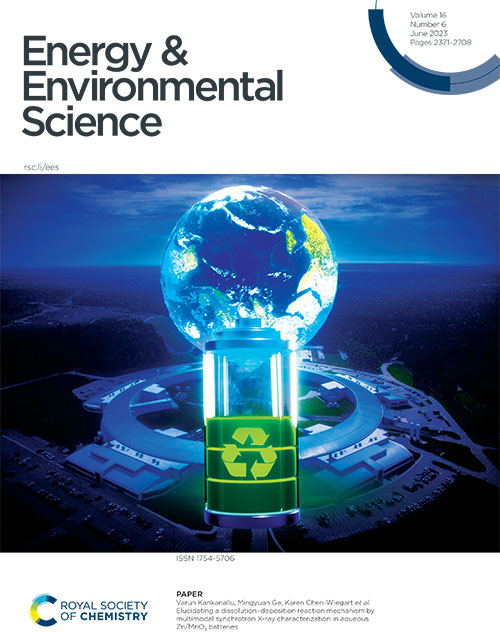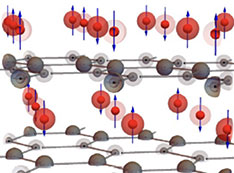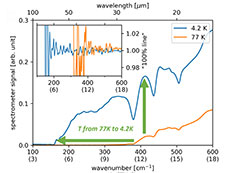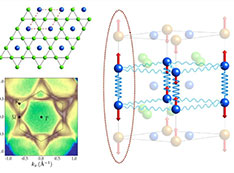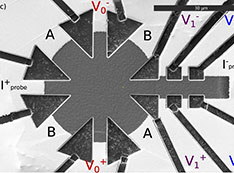Uncovering Reaction Mechanisms of Aqueous Zn/MnO2 Batteries
Scientists reveal structural and chemical details of the batteries' operation
August 16, 2023
The Science
Scientists elucidate the mechanisms that drive aqueous Zn/MnO2 batteries, including correlations between changes in structure, reaction chemistry, and 3D morphologies.
The Impact
This work provides the fundamental understanding that is key to designing Zn/MnO2 batteries with a more reversible capacity, thus furthering the development of these sustainable, cost-effective, and safe options for grid-scale energy storage media.
Summary
Among the types of batteries being investigated for next-generation grid-scale energy storage, rechargeable aqueous zinc manganese dioxide (Zn/MnO2) batteries are among the most promising. They are made from sustainable, abundant materials, are economical to produce, and, because they use water as the solvent in the electrolyte between the two battery terminals, are considered relatively safe.
In these batteries, the negative electrode (anode) is made of Zn and the positive electrode (cathode) consists of MnO2. Aqueous versions use a water-based electrolyte solution; here, the electrolyte contains ZnSO4 and small quantities of MnSO4 (S is sulfur) as an additive. In the simplest terms, when a Zn/MnO2 battery is discharged and charged, Mn and Zn ions are, respectively, dissolved into the electrolyte. However, the details of the dissolution and the subsequent processes that lead to the redeposition of the ions back onto the same electrode remain unclear; these processes can involve species containing both Zn and Mn.
Despite the large amount of attention these batteries have been receiving, researchers still have much to learn before real-life applications can be realized and deployed. In a broad sense, it is necessary to gain a more detailed understanding of the reaction mechanisms and structural changes that take place as the battery cycles. From there, researchers will be able to craft fundamental strategies to optimize the batteries’ performance.
In this study, scientists from Brookhaven National Laboratory and Stony Brook University used a multi-modal approach to investigate the many reactions and cathode structural changes that take place during the cycling of a test Zn/MnO2 battery system. Using Brookhaven’s National Synchrotron Light Source II, a U.S. Department of Energy Office of Science User Facility, the researchers studied the system using a multimodal approach that consisted of three synchrotron X-ray techniques—powder diffraction (XPD beamline), absorption spectroscopy (ISS beamline), and fluorescence microscopy (SRX beamline)—that were performed operando, meaning they were conducted while the system was operating under realistic conditions and in real time. Furthermore, these techniques were coupled with another synchrotron technique, X-ray nanotomography (FXI beamline) which provided a direct 3D visualization of the cathodes. Together, this suite of methods provided information on the chemical state and short-range ordering of the components of the system, the phase evolution and long-range ordering of those species, changes to specific elements, and structural changes that took place at the cathode.
There were two main takeaways from this study. First, the comprehensive information gathered will be crucial for understanding the underlying principles and mechanisms of Zn/MnO2 batteries, ultimately helping to lead to the development of optimized batteries that can be used in real-life applications. Second, the study revealed an important detail: once the dissolution of the active material (Zn ions or Mn ions) occurs during the first discharge cycle, the phase of the material that is ultimately deposited on the electrode during the charge cycle is independent of the crystal form of the electrode itself. This speaks to the flexibility researchers may have in designing high performance Zn/MnO2 batteries.
Download the research summary slide (PDF)
Contact
Mingyuan Ge
National Synchrotron Light Source II, Brookhaven National Laboratory
mingyuan@bnl.gov
Karen Chen-Wiegart
Department of Materials Science and Chemical Engineering, Stony Brook University
karen.chen-wiegart@stonybrook.edu
Publications
Varun R. Kankanallu, Xiaoyin Zheng, Denis Leshchev, Nicole Zmich, Charles Clark, Cheng-Hung Lin, Hui Zhong, Sanjit Ghose, Andrew M. Kiss, Dmytro Nykypanchuk, Eli Stavitski, Esther S. Takeuchi, Amy C. Marschilok, Kenneth J. Takeuchi, Jianming Bai, Mingyuan Ge, Yu-chen Karen Chen-Wiegart. Energy & Environmental Science, 16, 2464-2482 (2023)
https://doi.org/10.1039/D2EE03731A
Funding
This research was supported by the Center for Mesoscale Transport Properties, an Energy Frontier Research Center supported by the U.S. Department of Energy, Office of Science, Basic Energy Sciences, under award #DE-SC0012673. This research used resources, X-ray Powder Diffraction beamline (XPD, 28-ID-2), Inner-Shell Spectroscopy beamline (ISS, 8-ID), Full Field X-ray Imaging beamline (FXI, 18-ID), Beamline for Materials Measurement (BMM, 6-BM) and Submicron Resolution X-ray Spectroscopy beamline (SRX, 5-ID) of the National Synchrotron Light Source II, a U.S. Department of Energy (DOE) Office of Science by Brookhaven National Laboratory under Contract No. DE-SC0012704. This research used Materials Synthesis and Characterization Facility of the Center for Functional Nanomaterials (CFN), which is a U.S. Department of Energy Office of Science User Facility, at Brookhaven National Laboratory under Contract No. DE-SC0012704. Partial support for Nicole Zmich was provided by an NSF NRT Award in Quantitative Analysis of Dynamic Structures (DGE 1922639) as a fellowship.
2023-21611 | INT/EXT | Newsroom




